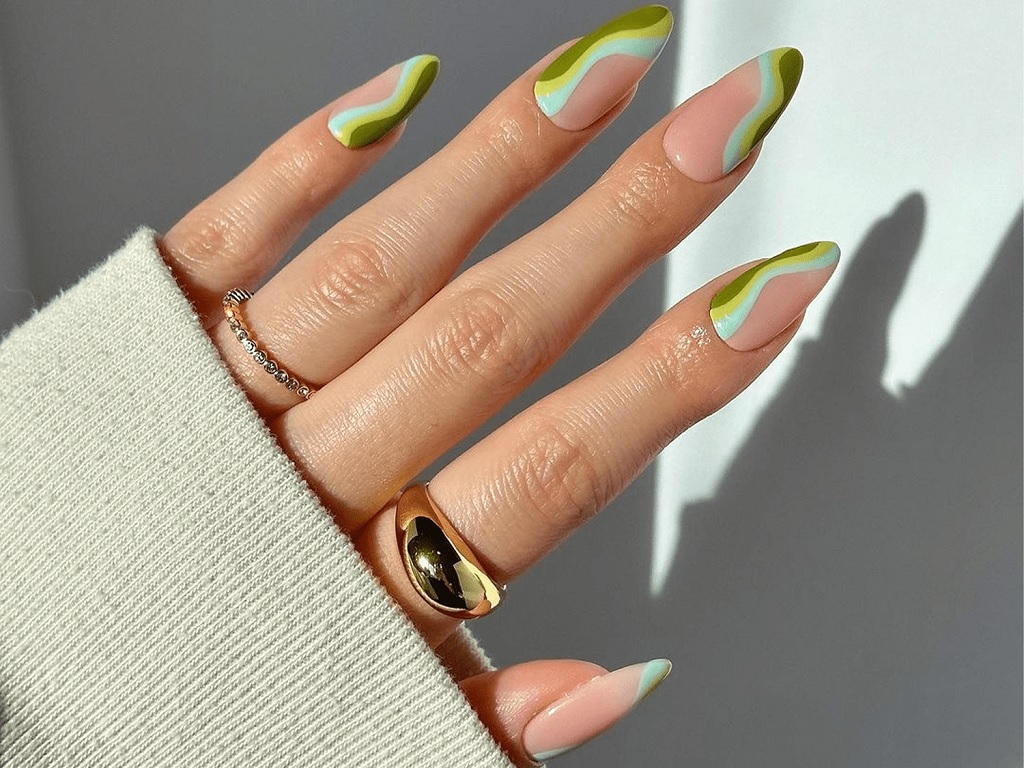How to Decide Between Gel Polish and Dip Powder
When it comes to achieving long-lasting, chip-free nails, two popular options are gel polish and dip powder. Both techniques have their pros and cons, and choosing the right one for you depends on several factors. In this article, we’ll discuss how to decide between gel polish and dip powder.
What is Gel Polish?

Gel polish is a type of nail polish that is cured under a UV or LED lamp. It typically lasts up to two weeks and provides a glossy, durable finish. Gel polish is available in a wide range of colors and can be applied to natural nails or used to extend the length of nails with the help of tips or forms.
Pros of Gel Polish:
Long-Lasting: Gel polish colors can last up to two weeks without chipping or peeling, making it a great option for those who want long-lasting results.
Quick Drying: Unlike regular nail polish, gel polish dries quickly under a UV or LED lamp, which means you can get back to your day-to-day activities without worrying about smudging your nails.
Low-Maintenance: Gel polish requires minimal maintenance, as it does not require any special care or attention.
Cons of Gel Polish:
Removal: Gel polish requires soaking in acetone to remove, which can be time-consuming and damaging to nails if not done properly.
Limited Thickness: Gel polish can only be applied in thin layers, which means it may not be suitable for those with weak or brittle nails.
What is Dip Powder?
Dip powder is a technique where colored powder is applied to the nails using a base coat, an activator, and a topcoat. It provides a long-lasting, chip-free finish and is available in a wide range of colors and finishes.
Pros of Dip Powder:
Strong and Durable: Dip powder is known for its strength and durability, making it a great option for those with weak or brittle nails.
No UV Light Required: Unlike gel polish, dip powder does not require UV or LED lamps, which means it is a safer option for those concerned about UV exposure.
Easy Removal: Dip powder can be easily removed with acetone, without the need for soaking.
Cons of Dip Powder:
Time-Consuming: Dip powder requires several steps and can be time-consuming, especially if you are doing it at home.
Messy: Dip powder can be messy, and it is easy to get the powder on your skin or cuticles.
Thicker Application: Dip powder can be applied in thicker layers, which means it may not be suitable for those with flat or thin nails.
How to Decide Between Gel Polish and Dip Powder?
Nail Health: Consider the health of your nails before deciding between gel polish and dip powder. If you have weak or brittle nails, dip powder may be a better option, as it provides additional strength and durability.
Time: If you are short on time, gel polish may be the better option, as it dries quickly and requires minimal maintenance.
Occasion: Consider the occasion for which you are getting your nails done. If you need long-lasting, chip-free nails for a special event, dip powder may be the better option.
Preference: Ultimately, the decision between gel polish and dip powder comes down to personal preference. Try both techniques and see which one you prefer.
How To Apply Dip Powder At Home
Applying dip powder at home can be a great way to achieve salon-quality nails without the cost. Here are the steps to follow:
Materials you’ll need:
Dip powder kit (includes dip powder, base coat, activator, top coat, and brush saver)
- Nail file
- Buffer block
- Cuticle pusher
- Alcohol or nail polish remover
- Cotton pads
Step 1: Prep your nails
Remove any existing nail polish using alcohol or nail polish remover. Use a cuticle pusher to push back your cuticles and file your nails to your desired shape.
Step 2: Apply the base coat
Apply a thin layer of the base coat to your nails and dip your nails into the dip powder at a 45-degree angle. Tap off any excess powder and use a brush to remove any remaining powder on your nails.
Step 3: Repeat the dipping process
Repeat the dipping process (base coat, dip powder, excess powder removal) two more times for full coverage.
Step 4: Apply the activator
Using a brush, apply the activator to each nail, making sure to cover the entire surface.
Step 5: Buff and shape your nails
Once the activator has dried, use a buffer block to shape and smooth your nails.
Step 6: Apply the top coat
Apply a thin layer of the top coat to your nails and let it dry for a few minutes.
Step 7: Finish with brush saver
After the top coat has dried, use the brush saver to clean the brush and keep it in good condition for future use.
And that’s it! With some practice, you can achieve salon-quality nails from the comfort of your own home.
Conclusion
Both gel nail polish and dip powder have their pros and cons, and choosing the right one for you depends on several factors. Consider your nail health, time, occasion, and personal preference before making a decision. With the right technique, you can achieve long-lasting, chip-free nails that look beautiful and healthy.